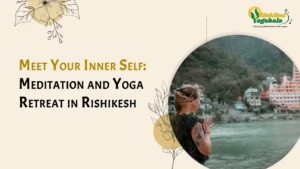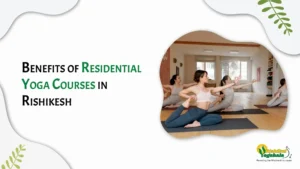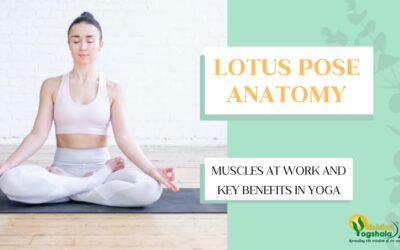Yoga may sound like a twist and turn of muscle spasms in a hot room. Is that why you are not getting those hot yoga pants? We are here to tell you that there is a type of yoga in which you just lay down on a mat, a blanket, or even your bed to unwind.
Curious?
The best thing about this style of yoga is that it can make you feel like you took a three-hour nap after 45 minutes. Read on to learn how yoga nidra might be the answer if you’re ready for a simple, pose-free way to slow down and recover from life’s stresses.
Before that, let us also introduce you to our most sought-after yoga teacher training program conducted in the foothills of the Himalayas. Learn yoga in the easiest and most comfortable way amidst nature to secure that piece of mental health most of us lack.

How Does Yoga Nidra Differ From Meditation?
Slowing down and relaxing is part of yoga nidra just like meditation. However, they are two distinct practices, even though some people tend to lump them together. When you practice yoga nidra, you lie down and aim to enter a state of conscious awareness sleep, which is a deeper state of relaxation accompanied by awareness.
When you meditate, you sit and are in a waking state of consciousness while focusing your mind and allowing thoughts to come and go. We can reach the delta state, which is the location of the deepest sleep cycle, through meditation. This also makes it possible for us to reach the theta state.
The deep healing state known as the delta state is where we want to finish yoga nidra. The mind and body are at rest while consciousness is awake.
Benefits of Yoga Nidra
Yoga nidra benefits the autonomic nervous system the most, including the parasympathetic and sympathetic nervous systems. These control centers take care of bodily functions like heartbeat, breathing, digestion, and blood flow that occur without conscious effort.
Meditation, as we mentioned before, is a part of yoga nidra that calms down the sympathetic nervous system, primarily, our fight-or-flight response.
When everything is in balance, immunity, digestion, and stress management all benefit. However, the pineal gland becomes activated during this deeper relaxation, releasing the hormone melatonin. Melatonin has potent antioxidant properties and promotes sound sleep by regulating immune function, blood pressure, and cortisol levels.
Yoga nidra appeared to be more effective at reducing anxiety than meditation, according to a recent study by reducing anxiety’s cognitive and physiological symptoms.
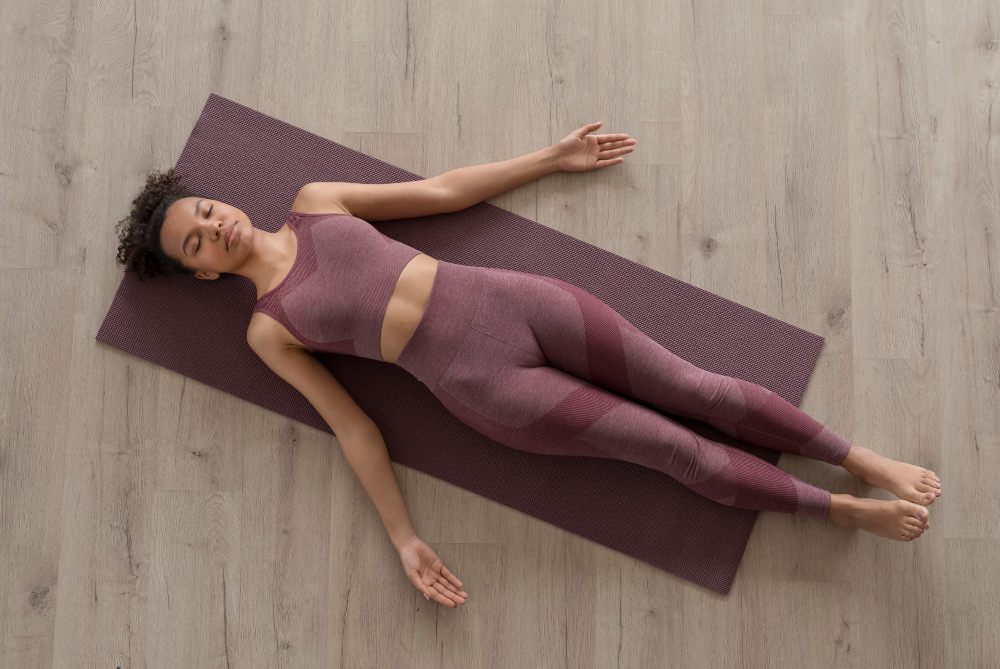
10 Steps of Yoga Nidra
Even though yoga studios offer yoga nidra, you can do it at home too by watching YouTube or even a meditation app. You don’t even need any fancy tools. You can simply lie flat on your back on a blanket or yoga mat with a pillow or a bolster to support your head, lower back, and spine. You can even rest a pillow or blanket on your knees.
- Connect with your greatest aspiration: Concentrate on a long-term objective or something related to your health. Feel the happiness that comes from visualizing this objective. In short, manifest your happiest moment or moments.
- Create an objective: Think of the reason you’re doing yoga nidra, whether it’s to get centered or to schedule some self-care.
- Find your inner strength: To feel safe and at ease, while practicing, involves tapping into a safe space within the body.
- Do a body scan: You will be asked to focus on specific body parts or sensations during a body scan. This is meant to help you relax and let go of tension.
- Take notice of your breath: Pay attention to how your body moves air in and out. Keep an eye out for how it enters your nose and how your abdomen moves up and down with each breath. You might be able to slow down your breath evenly with this.
- Accept your emotions: Accept the rough day you may have had. You don’t need to overlook the extreme stuff, however, when you remember it, try to think of the opposite emotions too to balance out things.
- Be aware of your thoughts: Similar to step six, you should observe your current thoughts without judging or attempting to suppress them. Should any regrettable considerations about yourself occur, think of the positive side of things to ease the stress.
- Feel the joy: If you start to feel blissful, take it in and let it wrap around you.
- Watch your “self”: Consider your personality and potential emotions. Alternatively, your sense of “I-ness.” Then, think of yourself as an observer. This way you will awaken more awareness and emotions in you.
- Think back on your work: Think about how you feel and what you were able to tap into during your session after you finish. The next step is to consider how, in both good and bad times, you can incorporate feelings of joy and peace into your daily life. Don’t leave your practice too quickly. Take a few moments to get back into the state of being awake.
Tips for Practicing Yoga Nidra
Even though yoga nidra appears to be much simpler than traditional yoga, you still need to practice it, particularly if you are not accustomed to meditation or other forms of mental relaxation. Try to do yoga nidra in a dark room away from other distractions. If you need to, you can use a sleep mask or a blanket to block out light. Because the body tends to cool down when it is at rest.
You can practice yoga nidra for sleep too by lying on a bed or a recliner if you don’t feel like lying on the floor for a while. Furthermore, you don’t need to begin with a long session. Work your way up from 15 or 20 minutes at first. Yoga nidra doesn’t have to be done in the middle of the day either. You can get a better night’s sleep by practicing at night.
Also, don’t give up if you have trouble during your first session, as with most things. Yes, it is much more difficult than you might think to remain silent and do nothing. But it won’t take you long to get the hang of it, especially when your body and mind need time to rest and recover.
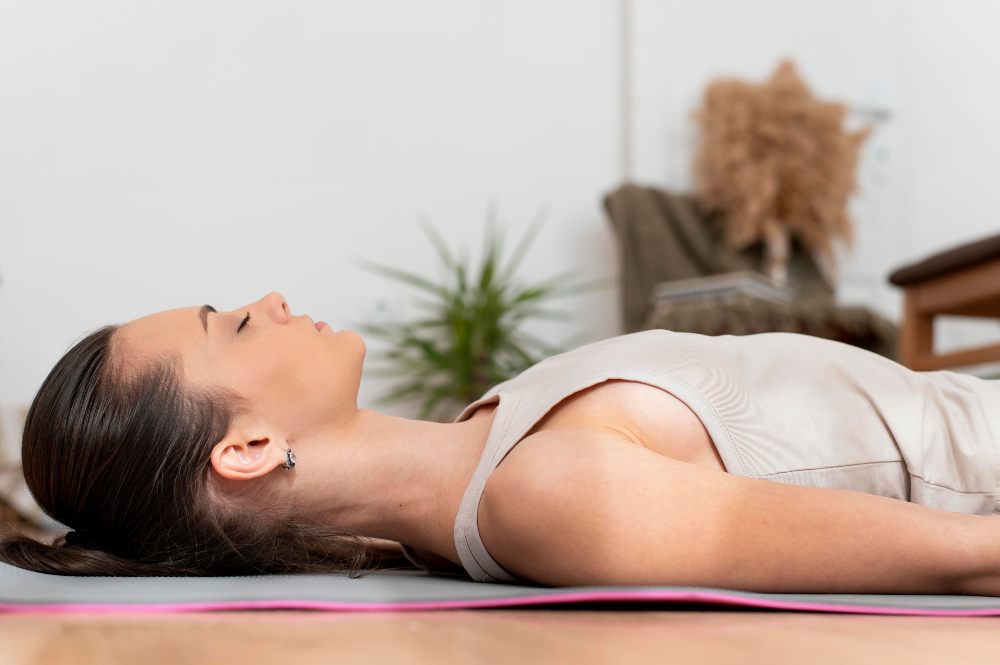
The 5 Koshas of Yoga Nidra
Let’s learn about each of the five koshas and how they relate to yoga nidra. But what are these koshas? The physical, higher intelligence, energetic, emotional/mental, and bliss bodies come under these layers, also called sheaths. According to the scripts of yoga nidra, the practitioner is left unaffected throughout the meditation as each layer rises to prominence one at a time.
1. Annamayakosha
The physical layer, or annamayakosha, is the first layer and probably the easiest to identify. The annamaya kosha, or “food body,” includes all of your muscles, bones, tendons, and ligaments.
This layer is addressed with a physical experience like a body scan during a yoga nidra practice. You might hear instructions like “Relax your head, arms, legs, upper body, lower body, etc.” In a way, the physical body fades out of your direct awareness as you progress to the next layer.
2. Pranamayakosha
The pranamaya kosha, or “energy body,” is the second layer of energy that can be seen, but is much less obvious than the annamaya kosha. Yoga philosophy holds that our prana, or energy, travels on the breath through inner channels called nadis. Although the term “prana” is sometimes used to refer to “breath,” the meaning doesn’t end there.
In a yoga nidra practice, we observe the breath to channel the pranamaya kosha. You might be asked to simply observe your inhalation and exhalation, or you might perform a practice like alternate-nostril breathing (nadi shodhana) without using your fingers.
Breathe in with your right nostril. Pause. Exhale through your left nostril. Pause. Inhale again through your left nostril. Pause. Breathe out through your right nostril, and so on.
The goal is to let go of some of your body’s energetic restrictions by focusing on your breath. After that, this layer, like the physical layer, disappears.
Also Read: Veerasana (Hero Pose): Benefits, Technique, and Tips
3. Manomayakosha
The manomaya kosha, or “mind-body,” is the mental and emotional layer. We are living in this kosha whenever we feel carried away with anger, fear, or awe. The manomaya kosha reveals both voluntary and involuntary communication with oneself and others, revealing our instinctive state of mind in all circumstances.
We may attempt to avoid dealing with this layer by pushing it to our subconsciousness and ignoring it, but when our emotions reach a “breaking point” where we are unable to contain our emotional and/or physical responses. They can skyrocket to the surface (and beyond). That is the reason this layer is tended to in yoga nidra, where we can encounter feelings without being ruled over by them.
4. Vijnanamayakosha
The higher intelligence layer, also known as the “wisdom body,” is the wiser and more intuitive brother or sister of the manomaya kosha. When you say something unexpectedly insightful, you sometimes wonder, “Where did that come from?” That is the manifestation of your vijnanamaya kosha.
Your gut reaction is yet another example. For instance, even though you looked both ways and saw nothing, you don’t understand why you didn’t cross the street you cross every day. That day, something in you told you not to cross, and then suddenly, without warning, a car flew down the street. It’s possible that taking a different route saved your life! This is vijnanamaya kosha at work.
5. Anandamayakosha
The fifth sheath is the “bliss body,” or anandamaya kosha, and it can be described as total engulfment in a state of bliss. This is the most subtle of the five koshas and is present in all of the practices for the other layers of yoga nidra, as well as in the brief silence before we are released from the meditation after the journey. There is a lot to explore in that space, most notably the feeling of being completely embraced in the practice.
Typically, yogis experience a sense of body, breath, and mind unity upon awakening. The sensation is one of completeness, frequently accompanied by a sense of tranquility and comfort in complete silence. When the practice yields these results, it indicates that each layer has been addressed.
The Bottom Line on Yoga Nidra
Yoga Nidra literally translates to yogic sleeping. It is an ancient method that induces a deep state of conscious relaxation in the practitioner. It is a methodical way to shift our awareness from the outside world to the inside world. It induces a deep sleep in which our senses, intellect, and mind unwind.
Incorporating this pose into your practice can lead to significant improvements in overall well-being. For those interested in deepening their yoga journey, consider enrolling in a yoga teacher training program. Rishikul Yogshala Rishikesh, a leading Yoga school in Rishikesh, offers comprehensive courses like the 200 Hour Yoga Teacher Training in Rishikesh and the 300 Hour Yoga Teacher Training in Rishikesh. These programs are designed to help you master your practice and share the transformative power of yoga with others.
Get your lessons on yoga nidra now!
Yoga Nidra FAQs
1. How is yoga nidra done?
Yoga Nidra, also known as yoga sleep, is a half-awake state in which you remain awake yet asleep. Simply put, it is a stage known as “going to sleep” that can be brought on by expert instruction or guided meditation. Yoga Nidra, one of the simplest yoga asanas, allows practitioners to comfortably rest in savasana, or corpse pose.
2. Is it OK to sleep during yoga nidra?
Yoga Nidra is about mindfulness — not gripping to waking. True Yoga Nidra does not necessitate that “I” be “awake” in the usual sense of the word.
3. Is yoga nidra better than a nap?
Yoga nidra for sleep is the best nighttime routine as it is a meditation guide to shut down everything and add awareness, whereas a typical nap shuts down everything, including awareness. However, it is similar to a nap in that you are asleep. As a result, you become aware of various body parts and relax more effectively.




